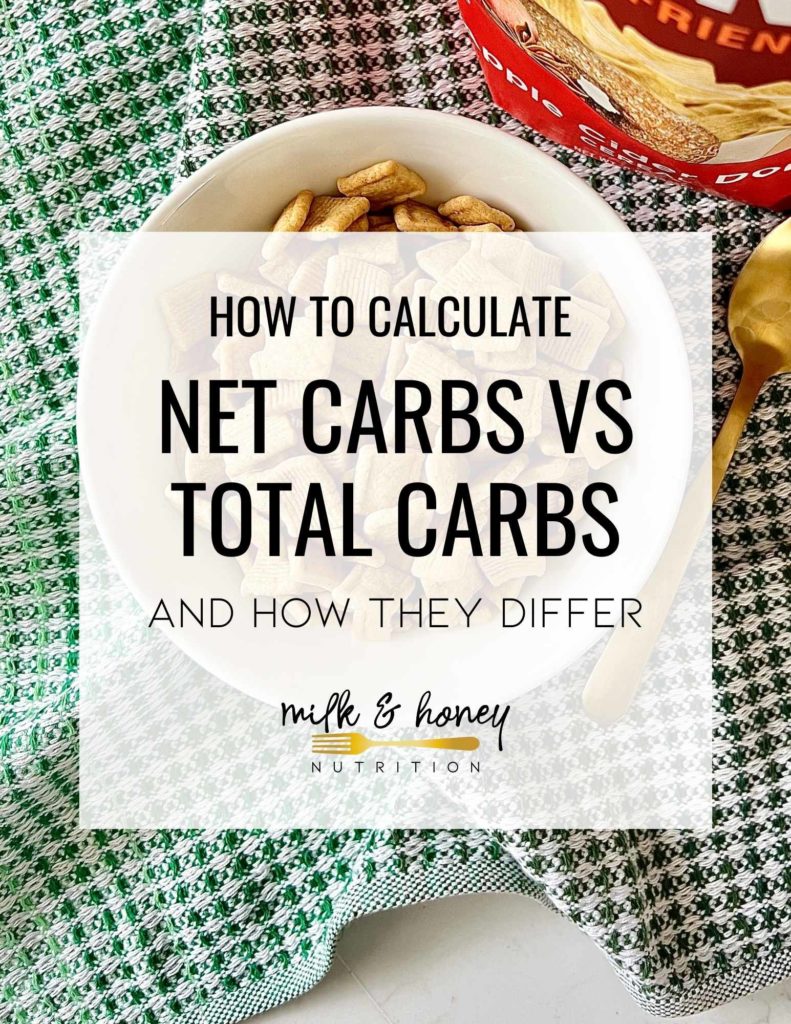
Keep reading for a complete breakdown and explanation of net carbs vs total carbs and what they mean for diabetes management.
If you’ve spent any amount of time living with diabetes, you’ve certainly heard the term net carbs. But, what’s the difference between net carbs vs total carbs?
This article is not intended to provide medical advice, diagnosis, opinion, treatment or services. This article and the links contained in it provide general information for educational purposes only. The information provided in this article is not a substitute for medical care, and should not be used in place of the advice of your physician or registered dietitian.
Answering the question: What are net carbs vs total carbs?
As blood sugar balance gets talked about more and more in the news and trending on social media, you’ve likely seen the term net carbs. But, what does it mean? And, why does it matter?
What’s the difference between net carbs and total carbs?
So how do we know the difference between net carbs vs total carbs? Total carbohydrates represent the total number of all carbohydrates in a food. But, net carbohydrates refers to the portion of total carbohydrates in a food that can/will actually impact blood sugar levels. As you’ll see below, not all carbohydrates impact blood sugar levels.
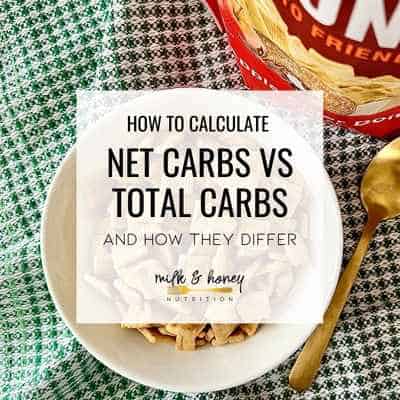
Types of carbohydrate
To start, let’s do a quick review of the different types of carbohydrates and what is typically listed on nutrition labels.
- Starch
- Sugar
- Fiber
- Sugar alcohols
- Allulose
Starch
Starch makes up the primary form of carbohydrates for most people. It is found in plant based foods.
Sugar
Sugar occurs naturally in foods like fruit, vegetables, and milk. It is also added to processed foods. You’ll see added sugar listed on the label as “added sugar.”
Fiber
Fiber is found in fruits, vegetables and whole grains. It helps keep you feeling full and satisfied, and takes longer to pass through the digestive tract than starch. Consuming foods high in fiber may improve digestion, help manage blood sugar, improve cholesterol, and reduce heart disease risk.
Sugar alcohols
Sugar alcohols used as sweeteners have about half the calories of regular sugar. They can occur naturally in fruits and vegetables, and some are man-made. Some sugar alcohols can cause GI distress. Read more about sugar alcohols here.
Allulose
Allulose (a naturally occurring sugar) is in figs, raisins, and molasses. It is not absorbed into the body, so it does not affect blood sugar levels. It is, however, included in the total carbohydrate number listed on food labels.
What are net carbs?
Net carbohydrates (vs total carbohydrates) are the carbohydrates that can impact blood sugars and that the body can absorb and digest. This terminology can be somewhat confusing for consumers though, as there’s not a consistent definition. And, net carbs are not a regulated term on a nutrition label.
In spite of this though, it’s important to understand the concept if you’re managing diabetes, and especially if you use insulin to manage your diabetes.
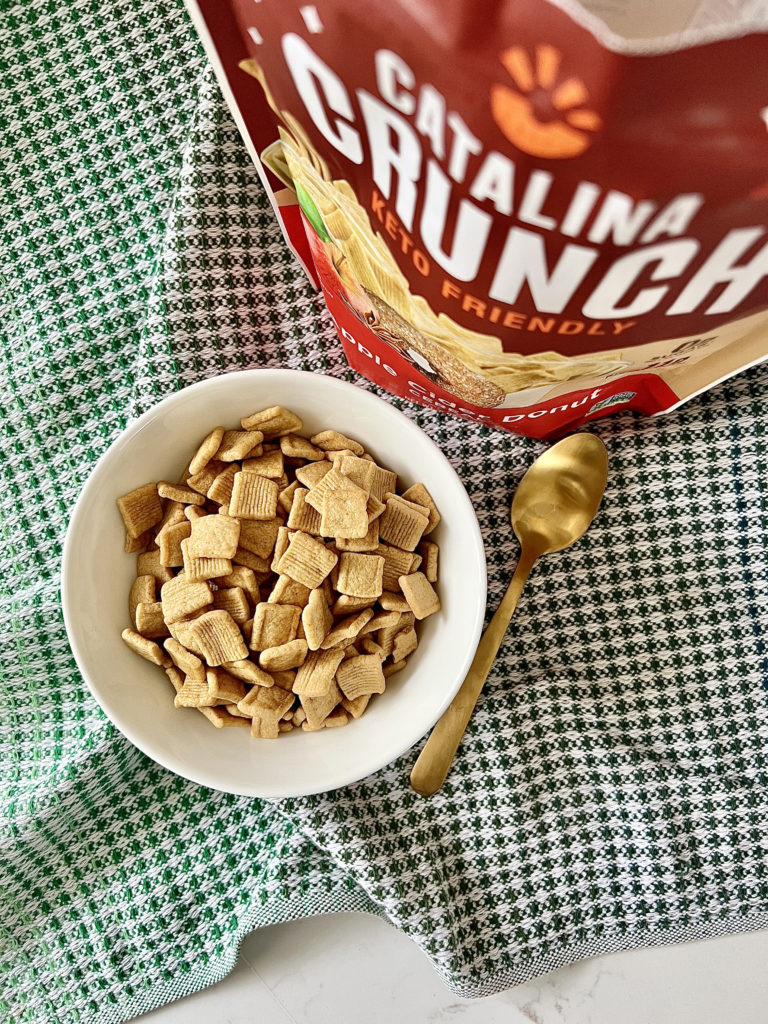
How to calculate net carbs
Before we discuss how to calculate carbs and net carbs, let’s answer a few questions I get asked pretty frequently.
Do you subtract sugar alcohol from carbs?
As we’ll discuss below, yes, sugar alcohols do get subtracted from total carbohydrates when trying to determine net carbs.
Is fiber a carb?
Yes, fiber is a type of carbohydrate, but it not digested by the body.
Does fiber cancel out carbs?
No, fiber is simply a type of carbohydrate that our bodies cannot digest.
Net carb calculation
To calculate net carbs, most people will subtract the following from the Total carbohydrate number:
- If fiber is >5g, subtract half of the fiber grams
- Subtract half of the sugar alcohol grams
- Subtract all of the allulose grams
Total carbohydrate – (0.5 x Fiber) – (0.5 x Sugar Alcohols) – (Allulose) = Net Carbs*
*Please note that this is not an end all, be all formula. Some people notice a blood sugar response from fiber and choose not to subtract it from the Total carbohydrate number. Alternatively, some people don’t notice a response at all and subtract all of the fiber. Also, some people may or may not subtract out sugar alcohols. The formula above is typically where your diabetes education team will tell you to start and then make adjustments from there. As always, speak with your healthcare team if you have any questions or concerns.
Example: Counting net carbs vs total carbs for fruit
To put this into practice I’m going to use the nutrition label for 1 cup of blueberries.
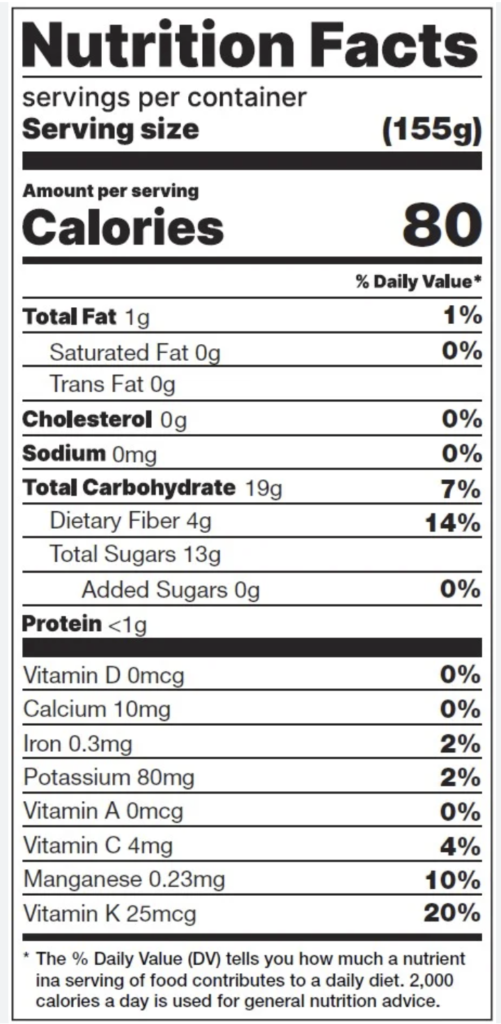
As you can see, the Total Carbohydrates listed is 19g, Fiber is 4g, and there are no sugar alcohols or allulose in blueberries. So, our net carb vs total carb calculation looks like this…
19g – (0.5 x 4g) – (0) – (0) = 17g net carbs*
*Remember, your number may be different depending on how you and your doctor choose to handle fiber and sugar alcohols.
Example: Counting net carbs vs total carbs for packaged products
Packaged products may use a different formula to calculate net carbs. (Just as we mentioned above, this may or may not be a different number than what you or your doctor determine to be accurate for you.)
To show you an example, I’ll use Catalina’ Crunch’s latest Limited Edition cereal: Apple Cider Donut! (PS- if you have not tried this flavor yet… You need to! It might be replacing Honey Graham as my favorite flavor.)
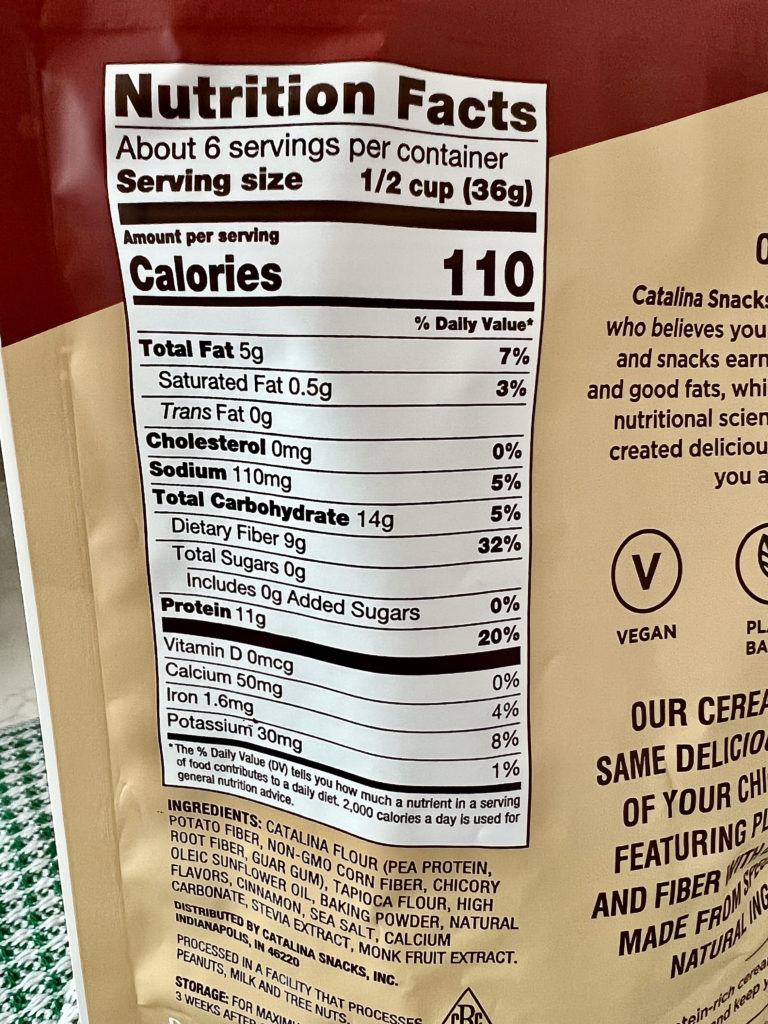
Total Carbohydrates listed is 14g, Fiber is 9g, and there are no sugar alcohols or allulose in this product. So, our net carb vs total carb calculation here, looks like this…
14g – (9g) – (0) – (0) = 5g net carbs*
Should I count net carbs or total carbs?
Use the framework and examples we discussed above to determine the best way for you to count net carbs vs total carbs, and always speak with your doctor for their specific recommendations.
Net carbs vs total carbs in keto
Unlike other food labels and terms, “keto” is used primarily as a marketing term these days. While it does provide some information on the category of food, it does not indicate the quality of the product or how it is being described as keto.
If you are choosing a product labeled as keto, choose options that do not have a ton of sugar alcohols and also offer adequate amounts of fiber and protein.
This is one of the things I love about Catalina Crunch cereals! I love that their packaging is super cute, it tastes delicious, AND it has a nutritional profile that makes this diabetes dietitian very happy!
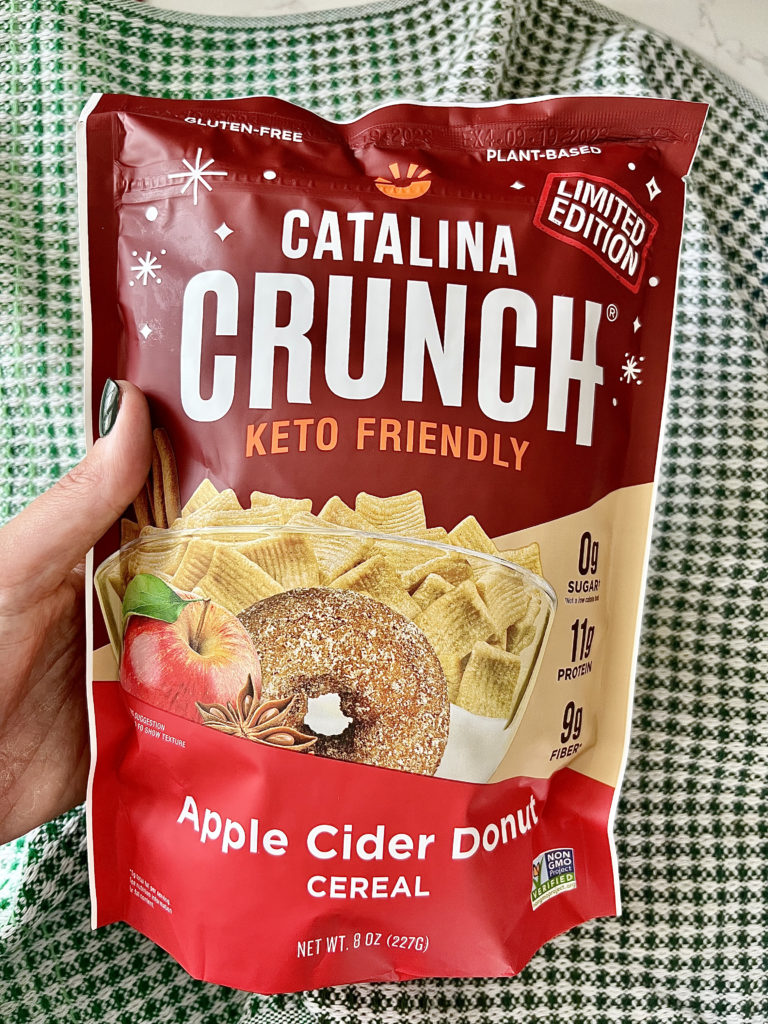






One Response
Very interesting breakdown. Definitely learned something!